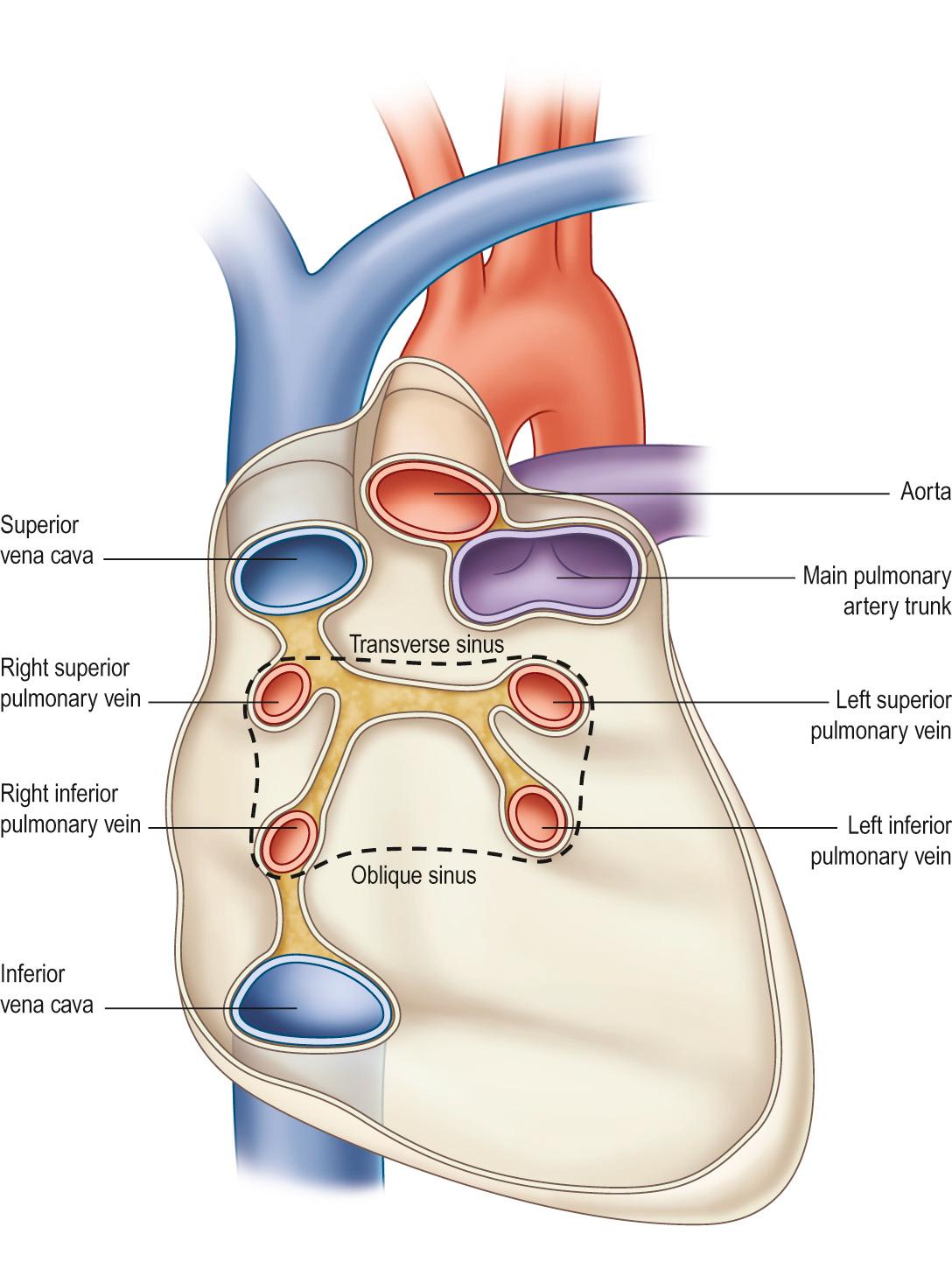Physical Address
304 North Cardinal St.
Dorchester Center, MA 02124
Pericardiectomy
Pericardiocentesis
Pericardial harvesting, e.g. closure of atrial septal defect
Thoracoscopic pericardial window creation
Relief of pericardial tamponade post-cardiotomy
Pericardial biopsy
The surface projections of an average adult heart are modified by age, sex, stature, ventilation, the position of the diaphragm and posture. The projection of the cardiac borders on to the anterior thoracic wall forms a trapezoid. The upper border slopes from the second left costal cartilage to the third right costal cartilage, and the inferior border runs leftwards from the sixth right costal cartilage to the cardiac apex, located approximately 9 cm lateral to the midline, often in the left fifth intercostal space or level with the fifth or sixth rib. The right border is a curved line, convex to the right, running from the third to the sixth right costal cartilages, usually 1–2 cm lateral to the sternal edge. The left border is convex laterally and extends superomedially from the cardiac apex to meet the second left costal cartilage, approximately 1 cm from the left sternal edge.
The pericardium is a double-walled sac consisting of two components – fibrous and serous pericardia – with a normal combined thickness of 1–2 mm. It contains the heart, juxtacardiac segments of the great vessels and 20–50 ml of serous fluid distributed mostly over the atrioventricular and interventricular grooves. It is located in the middle mediastinum, where it is anchored superiorly by continuity with the adventitia of the aorta, pulmonary trunk, superior vena cava and pretracheal fascia; inferiorly, by attachment to the central tendon of the diaphragm; and anteriorly, by attachment to the posterior surface of the sternum via the superior and inferior sternopericardial ligaments (the extent of these ‘ligaments’ is very variable and the superior is often undetectable).
The outer fibrous pericardium is a tough collagen-rich layer that is used as an autograft in closure of septal defects, osteoplasty, valve repairs, intracardiac baffles and suture reinforcement. The serous pericardium is a closed sac within the fibrous pericardium and has visceral and parietal layers. The visceral serous layer is continuous with the epicardium and covers the heart and great vessels; it is reflected into the parietal layer, which lines the internal surface of the fibrous pericardium. The pericardium serves multiple functions. Anatomically, it provides stabilization for the heart within the chest via its anchor points, maintains cardiac geometry and provides a physical barrier to infection. Physiologically, the pericardial fluid reduces friction during cardiac movement; the lack of compliance of the fibrous layer prevents chamber distension, maintains a constant hydrostatic pressure to all cardiac chambers, and promotes chamber coupling with facilitation of atrial filling due to the resulting negative pericardial pressure during ventricular systole.
As the serous pericardium is reflected around the great vessels it creates two clinically important sinuses – the oblique and transverse sinuses ( Fig. 49.1 ). The oblique sinus lies behind the heart as a cul-de-sac between the inferior vena cava and pulmonary veins, anterior to the oesophagus and posterior to the left atrium. The transverse sinus lies anterior to the superior vena cava but posterior to the aorta and main pulmonary trunk; it is important during cardiac surgery when the aorta is cross-clamped to isolate the heart during delivery of cardioplegia to arrest the heart, and is also used to pass a ligature during surgery. Both sinuses are accessed surgically when creating lines of ablation for atrial fibrillation (see Fig. 49.1 ).

The phrenic is a mixed nerve that provides the sole motor supply to its hemidiaphragm ( Ch. 46 ). Derived mostly from the fourth cervical ventral ramus, it also receives contributions from the third and fifth cervical ventral rami. Within the thorax, the phrenic nerves descend anterior to the pulmonary hilum between the fibrous pericardium and mediastinal pleura, accompanied by the pericardiacophrenic vessels. They supply sensory branches to the mediastinal pleura, fibrous pericardium and parietal serous pericardium. The phrenic nerves must be identified and preserved during pericardial procedures, especially window creation, pericardial decortication and thymectomy. The right phrenic nerve is shorter and lies more posteriorly, such that usually only an anterior window is feasible. On the left it is possible to create windows both anterior and posterior to the phrenic nerve.
Become a Clinical Tree membership for Full access and enjoy Unlimited articles
If you are a member. Log in here